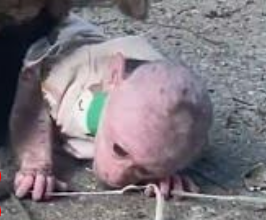
Scientific research plays a vital role in shaping baby monkey-friendly practices. Studies on infant primate development, attachment behavior, diet, and socialization offer valuable insights for caregivers and conservationists. Research-based approaches help sanctuaries and zoos tailor their care methods to suit the specific needs of different monkey species. For instance, understanding the subtle differences between how capuchins and macaques rear their young leads to more accurate rehabilitation strategies and better outcomes for the babies in care.
Enrichment is another cornerstone of a baby monkey-friendly environment. Mental and physical stimulation is essential for young monkeys, who are naturally curious and active. Care centers must provide a variety of enrichment tools—such as foraging puzzles, safe climbing structures, and sensory toys—that encourage exploration and learning. Regularly changing these items prevents boredom and supports healthy cognitive development. Enrichment also helps monkeys develop survival skills they’ll need if they are to be released into the wild later in life.
Climate change is becoming an increasingly important factor in wildlife care, and baby monkeys are especially vulnerable. Rising temperatures, changing rainfall patterns, and habitat destruction can disrupt food sources, breeding seasons, and disease patterns. Baby monkey-friendly programs now need to account for these climate pressures by reinforcing habitat resilience, maintaining safe temperature conditions in care facilities, and planning long-term conservation strategies that consider climate adaptation.
Collaboration among organizations is essential for improving care standards and expanding baby monkey-friendly efforts globally. Wildlife NGOs, rescue centers, academic institutions, and governmental bodies must work together to share data, coordinate rescues, and support cross-border conservation policies. By uniting efforts, these groups can standardize care guidelines, develop new technologies, and amplify each other’s impact—ultimately leading to better protection for baby monkeys worldwide.
Real-world success stories show the power of baby monkey-friendly approaches. In parts of Africa and Southeast Asia, sanctuaries have successfully rehabilitated orphaned monkeys and reintroduced them into protected reserves. These stories are not just inspiring—they prove that compassionate, informed care can give even the most vulnerable animals a second chance at life in the wild. Showcasing these successes also helps raise awareness and build support for continued efforts.
Finally, a baby monkey-friendly approach must always look beyond the short term. The goal isn’t just to help a single monkey or even a generation, but to foster a world where primates can thrive without threat. This long-term vision involves education, policy, habitat preservation, and sustained funding. It demands patience, persistence, and a deep respect for the lives of our fellow creatures. By staying committed to this vision, we can ensure that baby monkeys today—and in the future—have the chance to grow, explore, and live free from harm.